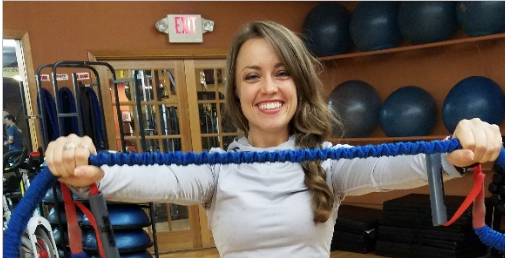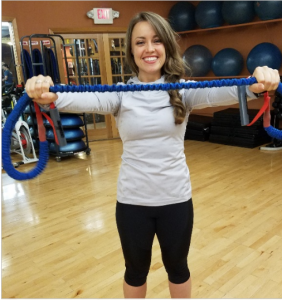Designing Your Weekly Workout Routine

To assure your program is balanced, you should have a workout plan that helps organize your time to assure you’re hitting all key fitness components. So, grab a sheet of paper and section it off into seven columns, one for each day of the week. Using pencil, start to fill in which activities you’ll do on which day. Once completed and you confirm that your program is balanced, you can create a file on your computer and print it out and post to remind you of your goal activity for the day.
Cardiovascular Exercise
Cardiovascular exercise will improve your heart, lungs, circulatory system, muscles, bones, mental health, sleep and more. It will improve your entire body’s physiology.
Ideally, you need to perform sustained cardio for a minimum of 20 minutes using aerobic activities like walking, running, biking, swimming, dancing or hiking to improve your endurance. You also
need to perform high intensity interval training to improve your speed.
Typically, each week, you should include 1-2 cardio workouts that are long and slow to develop your aerobic system and 1-2 cardio workouts that are hard and fast, but short to challenge your anaerobic and higher intensity energy system.
So each week, schedule easy, moderate and hard cardio workouts that are long, medium and short in duration to challenge all energy systems.
Cardio is like a shower for your cells. We take a shower every day to remove the dirt and residue from our external bodies and likewise, let’s not forget our internal bodies and wash away all those toxins inside of our bodies by getting a good sweat.
Muscle Conditioning Exercise

You need to challenge your muscles with load by lifting weights, moving your body against gravity or using other resistance training tools. Many physiologists agree that this is the true fountain of youth and a key component to sculpting your body. Just like cardio and the importance of including long and slow and fast and hard workouts, you should also lift heavy weights sometimes with less reps to develop strength, but also lift lighter resistance with more reps to improve your muscle endurance. Staple exercises to include in your program are Squats, Lunges, Step-ups, Pulls/Rows, Presses/Pushups, and Core conditioning. Some activities like climbing will naturally provide a good amount of muscle conditioning against load.
*Note – you can combine cardio and muscle workouts on the same day using a variety of formats. For example, you could do cardio first, then muscle after or start with muscle and finish with cardio. Or you could intersperse cardio and muscle conditioning exercises in a circuit type workout.
Flexibility & Mobility
As we age, we lose elasticity in our tissues. If you are tight to begin with, you are going to become even more rigid as you get older which will negatively affect your quality of movement, your postural alignment and risk for injury.
Effective flexibility is possessing a potent combination of adequate pain-free motion at a joint and stability and integrity at that same joint. You can definitely be too tight affecting your movement quality and likewise, you can be too flexible or hypermobile if you have no strength to support movement at your joints. So, incorporating muscle release, range of motion and stretches to tight areas like your hamstrings, hip flexors, calves, glutes, chest, shoulders and upper back is critical. Attending a Yoga, Pilates or Foam Rolling class one to two times per week can be very helpful.
Sample Program
Try this sample program for an intermediate/advanced exercise participant who is a runner, but needs to balance their program to include more strength, core, stretching and cross-training. For example, their schedule may allow for approximately 60-70 minute workouts. Depending on their amount of time, their schedule, interests and goals… modify this program. Be sure to incorporate all fitness components and all levels of intensity and duration (easy/moderate/hard and short/medium/long)
| MON | TUES | WED | THURS | FRI | SAT | SUN |
| 50 minutes Full Body Cardio & Muscle intervals 10 min stretch & mobility | 30 minute Mod intensity run 10 minutes core
20 minutes yoga |
20 minutes of Rowing 40 minutes of lower and upper body muscle strength (8-12 reps)
10 min stretch & mobility |
40 minute mod intensity run incorporating hills 10 minutes Core
15 minutes Yoga |
40 minute cycling class + 20 minutes Upper Bod Strength (10-15 reps)10 minutes stretch & mobility | Long Run5+ miles
10 min stretch & mobility |
Active recovery day *Could include an easy walk, hike or bike |
An important point to leave you with is to workout NOT so that you can love your body, but workout BECAUSE you love your body! That’s an important difference to understand!
Yours in health & fitness,
Sherri McMillan
